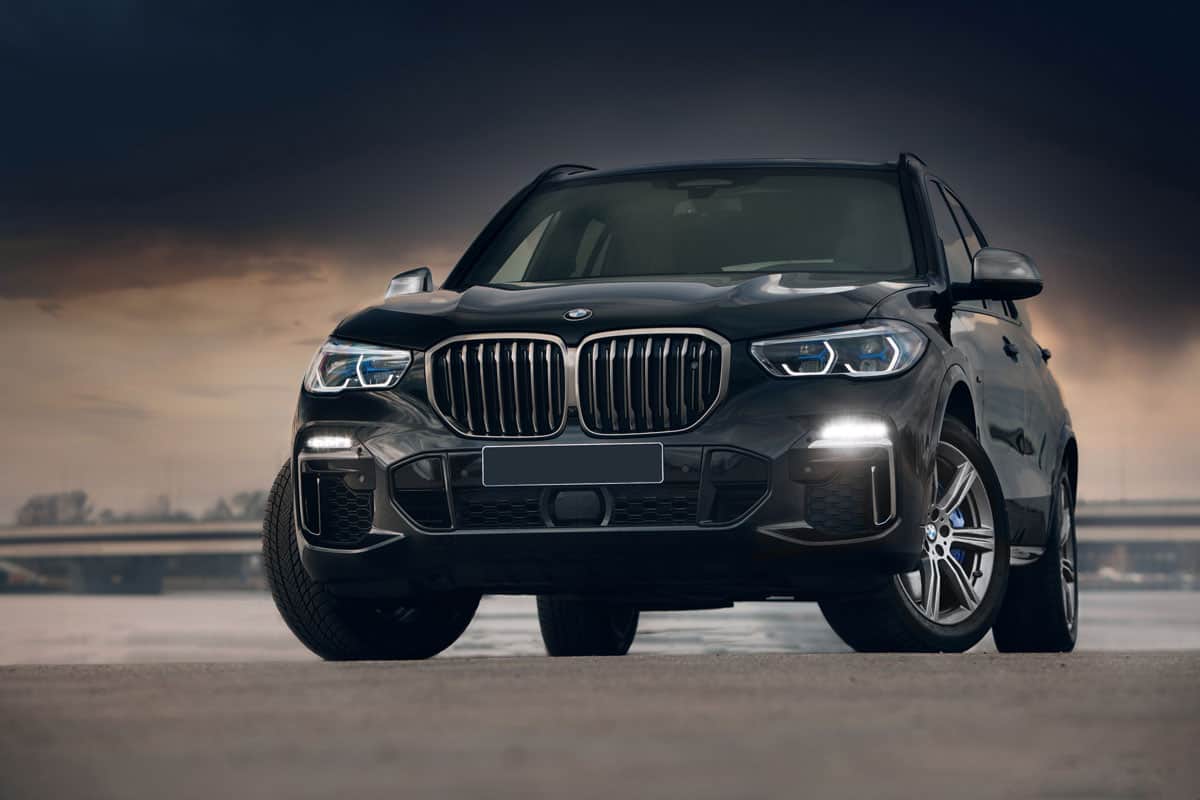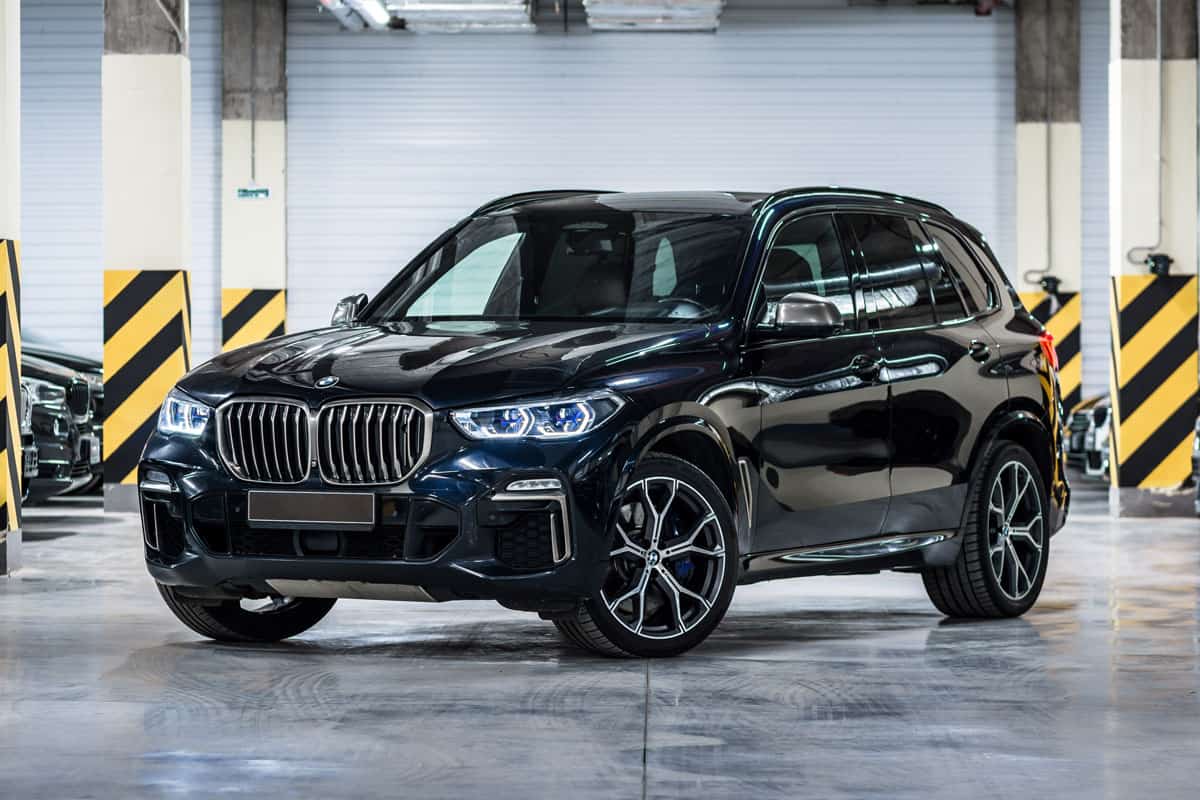BMW is recognized as one of the top manufacturers of vehicles worldwide, and their cars are considered at the high end of the automobile industry. If you are considering owning one, the article contains our findings on the essential features of several X series models to help you make an informed choice.
The BMW X Series has a payload capacity ranging from 924 to 1,030 pounds and can tow vehicles between 3,700 to 7,200 pounds. The earlier models are mid-sized luxury types with considerable power, while the more recent compact SAVs are designed for lighter loads.
The BMW X Series cars are classified as "SAV" or Sports Activity Vehicles designed for city, highway, and off-road driving. The different models feature a wide range of selections in terms of trim, power, and load capacity. Read on and find out which BMW would be most suitable for your needs and preference.
The BMW X Series
The "X" designation in these BMW models indicates a Sports Activity Vehicle; which is the company's version of SUVs and crossovers. The first generation X model came out in 1999 and is still presently manufactured. Despite the numerical designation, the X5 actually preceded the X3 which was followed by the X1 several years later.
The trend was to transition the series from a medium-sized vehicle to a more compact, energy-efficient, and affordable all-around transport with versatile crossover features.
BMW X5

The BMW X5 was introduced to the public in 1999, and was the first ever mid-size SUV the company has ever built. Veering away from a conventional body frame, the X5 is made with monocoque or carbon fiber chassis and is available in 4-wheel drive with manual or automatic transmission.
Here are its features:
- Class: Mid-size luxury crossover SUV
- Maximum payload capacity:
- BMW X5 sDrive40i: 1,014 pounds
- BMW X5 xDrive45e: 996 pounds
- BMW X5 M50i: 1,030 pounds
- Maximum towing capacity:
- BMW X5 sDrive40I: 7,200 pounds
- BMW X5 xDrive45e: 5,952 pounds
- BMW X5 M50i: 7,200 pounds
- Curb weight:
- BMW X5 sDrive40i: 4,828 pounds
- BMW X5 xDrive45e: 5,672 pounds
- BMW X5 M50i: 5,260 pounds
- Engine:
- BMW X5 sDrive40i: 3.0L Twin-Turbo I6
- BMW X5 xDrive45e: 3.0L BMW TwinTurbo I6 w/ Integrated Elec. Motor
- BMW X5 M50i: 4.4L TwinPower Turbo V8
- Drivetrain: 4-wheel drive
- MPG (miles per gallon) rating city/highway:
- BMW X5 sDrive40i: 21/26
- BMW X5 xDrive45e: 20 combined
- BMW X5 M50i: 16/22
- Cost: $60,600
- Seating capacity: Standard seating for five with a third-row seat option
The BMW X3
![Bmw x3 white color off the road trail sand dusty, How Much Weight Can A BMW Carry [Inc. X5, X3, & X1]?](https://vehq.com/wp-content/uploads/2023/01/How-Much-Weight-Can-A-BMW-Carry-Inc.-X5-X3-X1.png)
The BMW X3 is a compact SAV manufactured since 2003 that is slightly bigger than the X1 and was the first mid-size premium SUV available on the market. Despite its designation, it was actually the first of the X series to be produced.
These are its features:
- Class: Compact luxury crossover SUV
- Maximum payload capacity: 893 pounds
- Maximum towing capacity: 4,440 pounds
- Curb weight: 4,244 pounds
- Engine:
- BMW X3 sDrive30i: 2.0L TwinPower Turbo i4
- BMW X3 M40i: 3.0L TwinPower Turbo i6
- Drivetrain: Rear or 4-wheel drive
- MPG (miles per gallon) rating:
- BMW X3 sDrive30i: city/highway 23/29
- BMW X3 M40i: 21/26
- Cost: basic $43,700
The BMW X1

The BMW X1 is a subcompact SAV designed to target a wider range of customers due to its smaller stature, efficiency, and maneuverability at a more competitive price. The first model debuted in 2009 and has the following features:
- Class: Subcompact luxury crossover SUV
- Maximum payload capacity: 924 pounds
- Maximum towing capacity: 3,700 pounds
- Curb weight: 3,560 pounds
- Engine: 2.0L TwinPower Turbo
- Drivetrain: Front-wheel drive
- MPG (miles per gallon) rating: city/highway 24/33
- Cost: basic $35,400
The second (2016) generation model made slight adjustments with a longer wheelbase and an all-wheel drivetrain. The 2022 production featured the first hybrid petrol and diesel engines with slight variations in dimensions.
What Is The Meaning And Significance Of The Values?

To totally appreciate the capacity your vehicle can handle, it is necessary to break down the terminology and determine its practical application.
What Is Payload Capacity?
Payload capacity refers to the maximum amount of weight a vehicle can safely carry.
It takes into account the mechanical capabilities of a car, including the engine, frame, suspension system, drivetrain, wheel and axle configuration, and transmission.
The calculated weight prescribed by manufacturers includes the driver, all passengers, and cargo loaded into the cabin and trunk at a single time.
To illustrate, a payload capacity rating of 900 pounds can carry the driver and four passengers with an average weight of 150 pounds (150 X 5 = 750 pounds) and 150 pounds of cargo. However, safety experts and authorities highly recommend keeping the total weight at least 10% below the payload capacity and never exceeding it.
Why You Should Never Exceed The Payload Capacity
For safety reasons, overloading a vehicle is illegal. Because of the added weight, shifting and acceleration can be impeded, the vehicle may swerve, and the braking distance becomes longer. Driving this way endangers passengers and other motorists due to the possibility of a mishap or accident.
Exceeding the payload capacity would subject the engine, frame, suspension, brakes, and tires to mechanical stress that could drastically affect its performance and lower its mileage. In case of an accident, overloading would void the insurance and vehicle warranty.
What Is Curb Weight?
The weight of the vehicle itself, including the fluids needed to operate (full tank of gas, oil, battery, and brake fluid), is referred to as its "curb weight." The value does not include passengers or cargo.
The curb weight is significant and factors in when you want to accurately determine your vehicle's payload and towing capacity.
What Is GVWR?
GVWR or gross vehicle weight rating refers to the weight your vehicle can carry (payload) plus the weight of the car itself (curb weight).
To illustrate, let's use the BMW X1 as a reference. It has a payload rating of 924 pounds and a curb weight of 3,560 pounds. The gross vehicle weight rating is 4,484 pounds.
What Is GCVWR?
The GCVWR or gross combined vehicle weight rating is the maximum weight of a vehicle (GVWR) and weight of the attached trailer it would tow, including all loaded cargo and equipment. To simplify, GCVWR = GVWR of the vehicle + the GVWR of the trailer.
What Is Towing Capacity?
Put simply, the payload capacity is the weight a vehicle can safely carry, while towing capacity refers to the amount of weight it can pull. To calculate the amount, simply deduct the curb weight from the GCVWR to get the towing capacity.
To illustrate:
- Your vehicle has a curb weight of 4,000 pounds and a payload capacity of 1,000 pounds; this makes its GVWR 5,000 pounds.
- The trailer has a curb weight of 2,500 pounds and a payload rating of 800 pounds; its GVWR is 3,300 pounds.
- The GCVWR of the vehicle and trailer amounts to 8,300 pounds.
- Deduct the total curb weight of the vehicle (4,000 pounds) from the GCVWR (8,300 pounds), and you get a towing capacity of 4,300 pounds.
Again, it is safer to leave a 10% allowance and refrain from maximizing the capacity much less going over it.
To recap some key points:
- The payload refers to the weight, passengers and cargo included, that a vehicle can safely carry.
- The curb weight refers to an empty vehicle but includes the fuel, oil, and other car fluids.
- The GVWR or gross vehicle weight rating is the of sum of the payload and the curb weight.
- The GCVWR or gross combined vehicle weight rating is the total of the vehicle's GVWR and the trailer's GVWR.
- The towing capacity refers to the weight a vehicle can safely pull or tow.
One Final Thought
Do not rely solely on the manufacturer's figures and recommendations since there are other variables to be considered. Make your own estimates and calculations, and always keep the load under the maximum capacity. Never exceed the limit to keep you, your family, and other motorists safe.
In Closing

BMW SAVs feature a wide range of models with corresponding load capacities. We hope the article provided enough information to help you decide which of the series suits your needs the most. Remember, keep it under the limit, and happy motoring!
You might also find these topics helpful:
How Much Can You Tow With A BMW X3?
My BMW Check Engine Light Is On But Gives No Message Or Codes – Why? What To Do?
